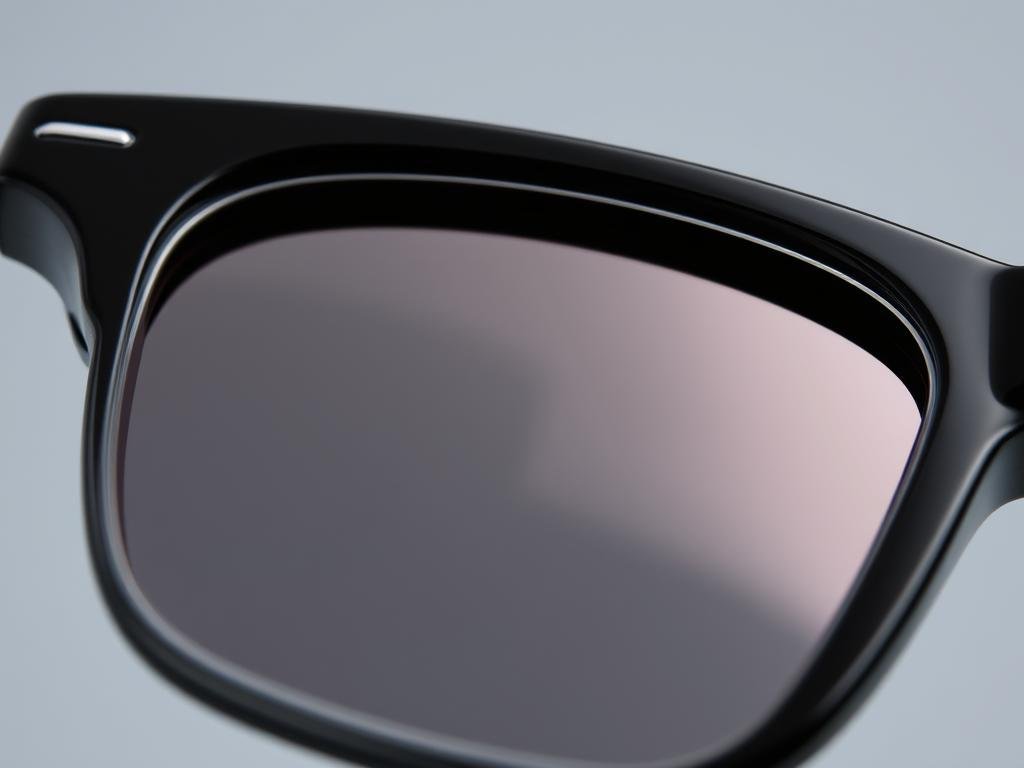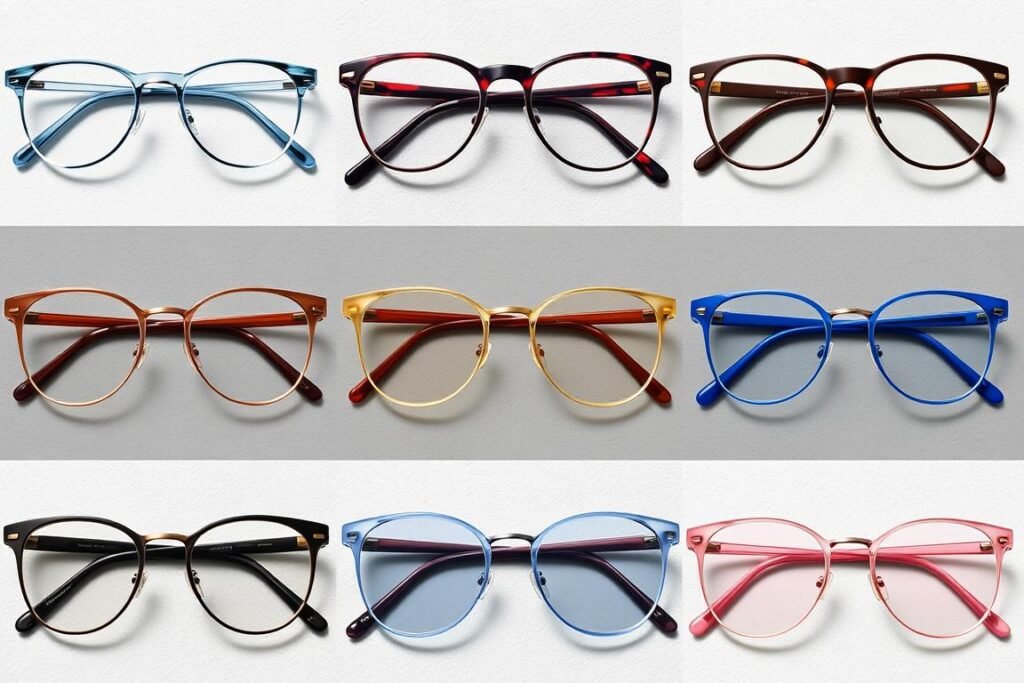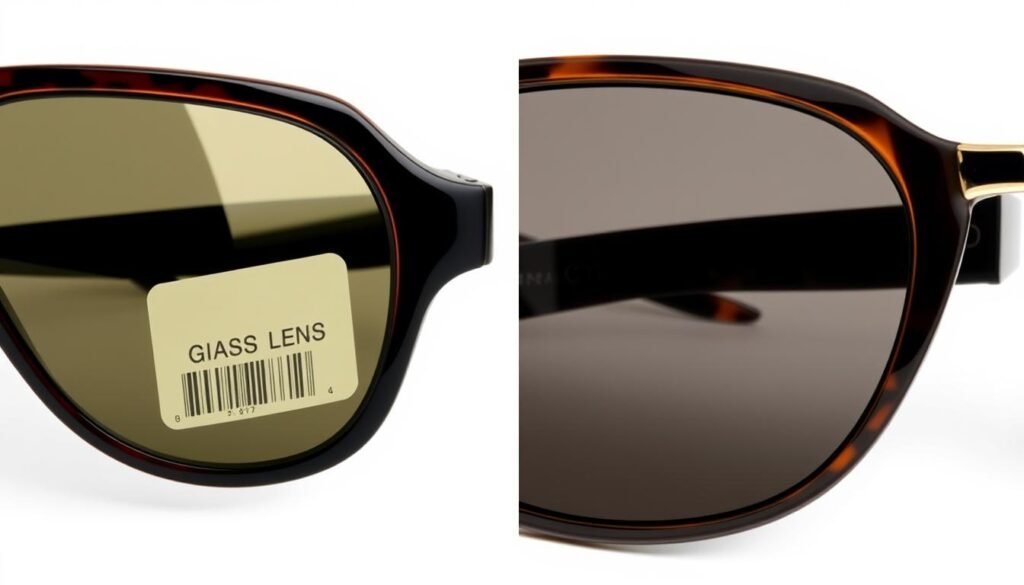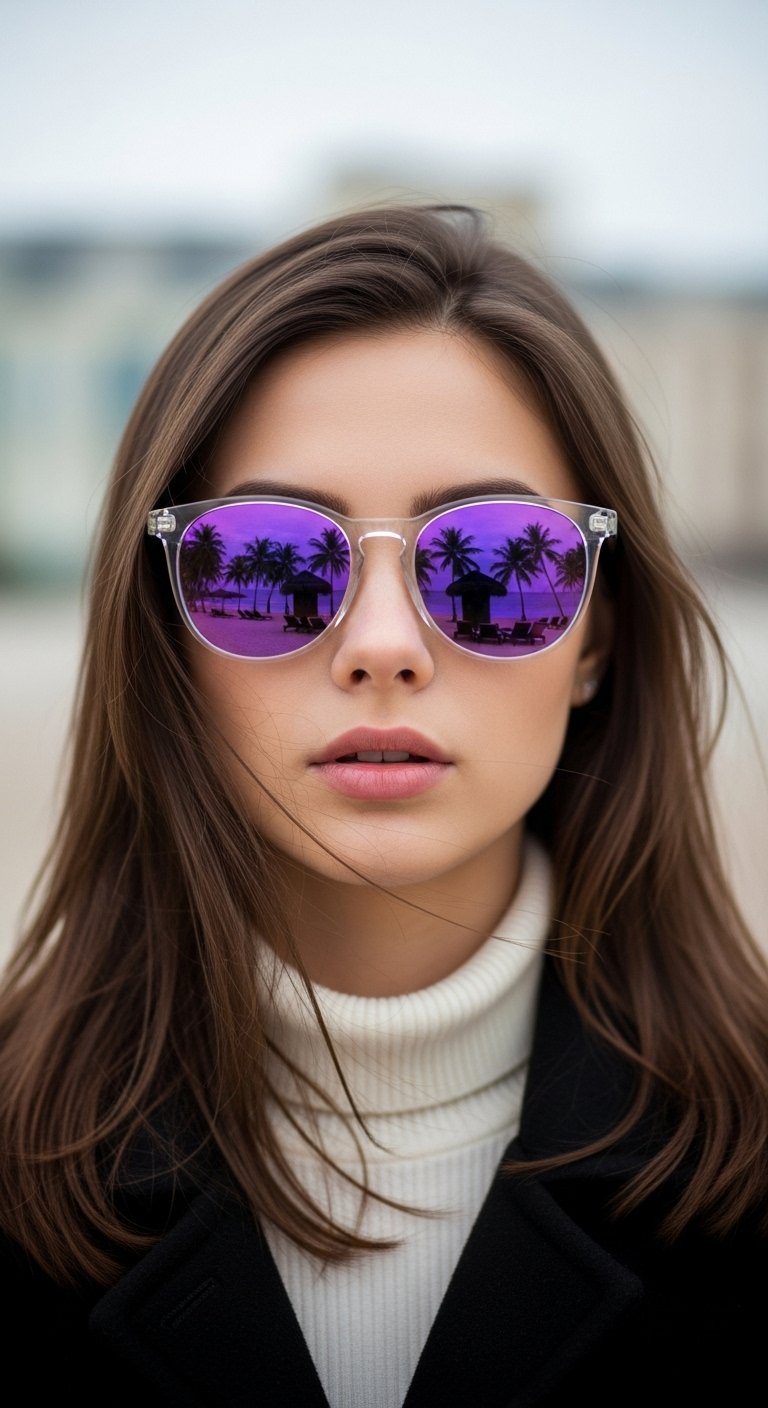Choosing between plastic vs glass sunglasses can significantly impact your comfort, style, and eye protection. While glass lenses were once the only option available, modern plastic alternatives have revolutionized the eyewear industry. But which material truly offers the best combination of durability, clarity, and protection for your eyes? This comprehensive comparison will help you make an informed decision based on your lifestyle, preferences, and specific needs.
Durability: Scratch Resistance vs. Impact Protection
When it comes to durability, glass and plastic lenses offer different advantages that might influence your decision based on your lifestyle and daily activities.
Glass Lenses
Glass lenses excel in scratch resistance. They maintain their clarity over time with minimal scratching, even without special coatings. This makes them ideal for those who are particularly careful with their eyewear but want long-lasting optical clarity.
However, glass has a significant drawback – it’s prone to cracking and shattering upon impact. This creates potential safety hazards, especially for active individuals or those with children who might handle their sunglasses.

Plastic Lenses
Modern plastic lenses, particularly polycarbonate, offer exceptional impact resistance. They’re designed to flex rather than shatter when struck, making them significantly safer for sports, active lifestyles, and children’s eyewear.
The main disadvantage of plastic lenses is their susceptibility to scratches. However, most quality plastic lenses now come with scratch-resistant coatings that significantly improve their durability, though they still don’t match glass in this aspect.

| Durability Factor | Glass Lenses | Plastic Lenses |
| Scratch Resistance | Excellent (natural) | Good (with coating) |
| Impact Resistance | Poor (shatters easily) | Excellent (flexes, rarely breaks) |
| Longevity | Excellent (maintains clarity) | Good (may degrade over time) |
Protect Your Investment
Not sure which material is right for your lifestyle? Consult with an eyewear professional who can assess your needs.
Weight: Comfort for All-Day Wear
The weight difference between glass and plastic lenses can significantly impact your comfort, especially if you wear sunglasses for extended periods.
Glass lenses are naturally heavier, often weighing twice as much as comparable plastic lenses. This additional weight can cause discomfort during all-day wear, with pressure points developing on your nose and ears. The weight also makes glass lenses more likely to slide down your face, requiring frequent adjustments.
For prescription sunglasses, this weight difference becomes even more pronounced as lens thickness increases with stronger prescriptions. Many frame styles, particularly rimless or semi-rimless designs, cannot support the weight of glass lenses.
Plastic lenses, particularly modern polycarbonate and CR-39 materials, offer significant weight advantages. Their lightweight nature makes them comfortable for all-day wear, reducing pressure on your nose and ears. This is especially beneficial for active individuals and those with stronger prescriptions.
The reduced weight also allows for greater frame selection, including delicate or rimless styles that couldn’t support heavier glass lenses. For children and active adults, the lightweight nature of plastic lenses provides both comfort and practicality.

Plastic Lens Weight Advantages
- Approximately 50% lighter than glass
- Comfortable for all-day wear
- Less pressure on nose and ears
- Stays in place better during activities
- Compatible with more frame styles
Glass Lens Weight Disadvantages
- Significantly heavier on face
- Can cause discomfort during extended wear
- Tends to slide down nose more frequently
- Limits frame selection options
- Impractical for many sports and activities
Optical Clarity: Seeing the Difference
Optical clarity is a crucial factor when choosing sunglasses, as it affects both visual comfort and eye strain during extended wear.
Glass Lens Clarity

Glass lenses have long been considered the gold standard for optical clarity. They provide distortion-free vision with exceptional transparency. This superior clarity is why glass remains the preferred material for precision optical instruments like cameras and microscopes.
Plastic Lens Clarity

Modern high-quality plastic lenses have significantly improved in clarity. Premium polycarbonate lenses now offer excellent optical quality that most wearers find indistinguishable from glass in everyday use. However, lower-quality plastic lenses can still suffer from distortion issues.
Practical Differences
For most everyday activities, the clarity difference between high-quality plastic and glass lenses is negligible. The human eye typically cannot detect the subtle optical differences. The exception is for specialized activities requiring exceptional visual precision.
“While glass lenses technically offer superior optical clarity, modern high-quality plastic lenses provide excellent clarity that satisfies the needs of most wearers. The difference is primarily noticeable in specialized applications rather than everyday use.”
Experience the Clarity Difference
Want to compare plastic vs glass sunglasses in person? Visit an optical store to try both options.
UV Protection: Safeguarding Your Eyes
Protecting your eyes from harmful ultraviolet (UV) radiation is perhaps the most important function of sunglasses, regardless of lens material.

Glass Lens UV Protection
Untreated glass lenses do not naturally block all UV radiation. However, modern glass sunglass lenses are treated with special UV-blocking coatings that provide complete protection. When properly treated, glass lenses can block 100% of harmful UVA, UVB, and UVC rays.
The advantage of glass is that these UV-protective coatings tend to be more durable and less likely to wear off over time compared to some plastic lens coatings.
Plastic Lens UV Protection
Many plastic lens materials, particularly polycarbonate, inherently block 100% of UV radiation without requiring additional treatments. This built-in protection cannot wear off over time, providing lasting eye safety.
This natural UV-blocking property is one reason why polycarbonate has become the preferred material for sports and children’s sunglasses, where protection is paramount.
Important UV Protection Facts
- According to the American Optometric Association, proper sunglasses should block 99-100% of both UVA and UVB radiation
- They should also screen out 75-90% of visible light
- The UV protection level is independent of lens color or darkness
- Always check for a label indicating “UV400” or “100% UV protection”
When purchasing sunglasses, always verify the UV protection level regardless of lens material. The quality of UV protection is more important than whether the lenses are made of plastic or glass. Look for labels indicating “UV400” or “100% UV protection” to ensure your eyes are properly safeguarded.
Style Options: Fashion and Function
The lens material you choose can significantly impact your style options and the versatility of your sunglasses.

Plastic Lens Style Advantages
- Compatible with virtually all frame styles, including rimless and semi-rimless designs
- Available in a wide range of colors and tints
- Easier to incorporate gradient tints and transitions (photochromic) technology
- Lighter weight allows for larger, more fashion-forward designs
- Better suited for polarization and mirror coatings

Glass Lens Style Limitations
- Limited to full-rim frames that can support their weight
- Fewer color and tint options available
- Limited photochromic (transition) lens options
- Weight restrictions limit frame size and style
- More difficult to apply certain specialty coatings
For fashion-conscious consumers, plastic lenses typically offer greater versatility and style options. The lightweight nature of plastic allows for more creative frame designs and a wider range of colors and effects. Glass lenses, while offering excellent clarity, tend to restrict style options due to their weight and manufacturing limitations.
Find Your Perfect Style
Browse a wide selection of sunglasses with both plastic and glass lens options to find your perfect match.
Cost Comparison: Value for Money
The price difference between plastic and glass sunglasses can vary significantly based on quality, brand, and features.
| Cost Factor | Glass Lenses | Plastic Lenses |
| Base Price Range | $150-$500+ | $20-$400+ |
| Prescription Lenses | Higher cost | More affordable |
| Replacement Cost | More expensive | More affordable |
| Longevity Value | Excellent (if not broken) | Good (with proper care) |
| Special Coatings | More expensive to apply | More affordable options |

While glass lenses often come with a higher price tag, they can offer excellent value through their durability and scratch resistance. However, this value proposition is only realized if the glasses aren’t dropped or damaged, as replacement costs for glass lenses are typically higher.
Plastic lenses offer excellent value for most consumers, particularly those with active lifestyles or children. The lower initial cost, combined with better impact resistance and lighter weight, makes them a practical choice for everyday use. Premium plastic lenses with high-quality coatings can approach the optical quality of glass while maintaining their practical advantages.
Cost vs. Protection
Never compromise on UV protection to save money. Inadequate UV protection can lead to serious eye conditions including cataracts and macular degeneration. Always verify that sunglasses provide 100% UV protection, regardless of price or lens material.
Recommendations: Making the Right Choice
Choosing between plastic vs glass sunglasses ultimately depends on your specific needs, lifestyle, and preferences.
Choose Glass Lenses If:
- Optical clarity is your top priority
- You’re extremely careful with your eyewear
- You rarely participate in active sports
- You don’t mind the additional weight
- Scratch resistance is important to you
- You prefer classic, full-rim frame styles

Real-world example: Ray-Ban’s classic Wayfarer and Aviator models are available with glass lenses for those seeking traditional optical quality and scratch resistance in iconic styles.
Choose Plastic Lenses If:
- You lead an active lifestyle
- Comfort and lightweight feel are important
- You’re buying sunglasses for children
- You want more style and color options
- Impact resistance is a priority
- You prefer rimless or lightweight frames

Real-world example: Oakley’s performance sunglasses exclusively use polycarbonate lenses for their superior impact resistance, lightweight comfort, and optical technology like their PRIZM lens enhancement.
Safety Consideration
Glass lenses can shatter upon impact, potentially causing serious eye injuries. For children, sports activities, or high-impact environments, plastic lenses are strongly recommended for safety reasons. Many eyecare professionals no longer recommend glass lenses for children under any circumstances.
How can I tell if my sunglasses have glass or plastic lenses?
Tap the lens gently with your fingernail. Glass lenses produce a clearer, higher-pitched sound compared to the duller sound of plastic. Glass also feels colder to the touch and is typically heavier. Another test: glass lenses won’t flex when you apply gentle pressure to the lens.
Do glass lenses provide better UV protection than plastic?
Not necessarily. Both materials can provide 100% UV protection when properly manufactured. Polycarbonate plastic naturally blocks UV rays, while glass typically requires a special coating. Always check for “UV400” or “100% UV protection” labels regardless of lens material.
Get Expert Advice
Still unsure which lens material is right for you? Consult with an eye care professional for personalized recommendations based on your vision needs and lifestyle.
Final Thoughts: The Best Choice for You
When deciding between plastic vs glass sunglasses, there’s no one-size-fits-all answer. Glass lenses offer superior optical clarity and scratch resistance but come with drawbacks in weight and safety. Plastic lenses provide excellent impact resistance, lightweight comfort, and style versatility at the cost of some optical perfection and scratch resistance.
For most everyday users, high-quality plastic lenses represent the best balance of performance, comfort, and safety. However, those who prioritize optical clarity above all else and are careful with their eyewear may still prefer glass. Whichever material you choose, ensure your sunglasses provide 100% UV protection to safeguard your long-term eye health.
Remember that lens material is just one factor in choosing the perfect sunglasses. Frame fit, lens color, polarization, and style should all be considered to find your ideal pair. When in doubt, consult with an eyecare professional who can help you navigate these choices based on your specific needs and preferences.
Ready to Find Your Perfect Sunglasses?
Browse top brands offering both plastic and glass lens options to find the perfect balance of style, comfort, and protection.

